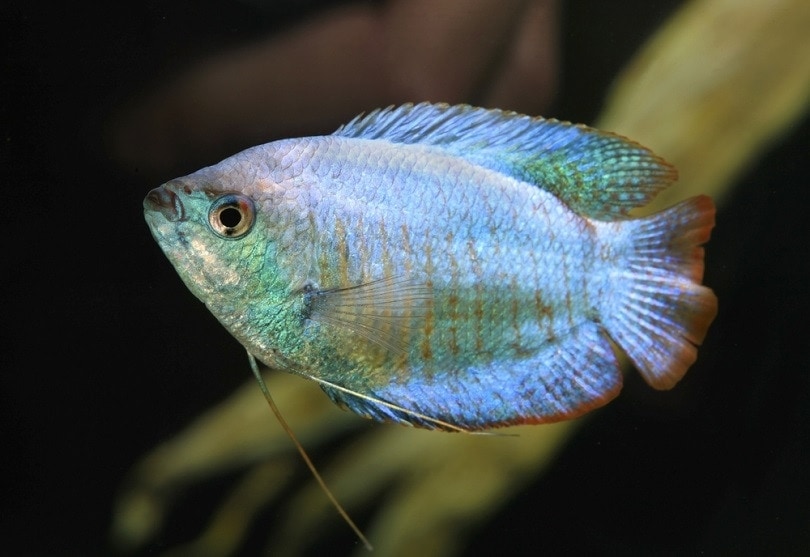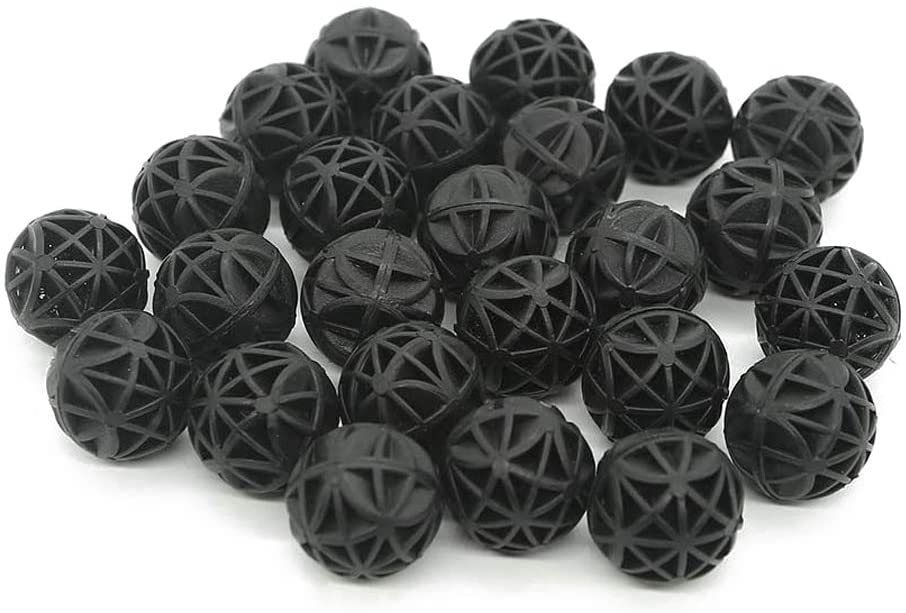Common Pleco vs Sailfin Pleco: What are the Differences?

Updated on
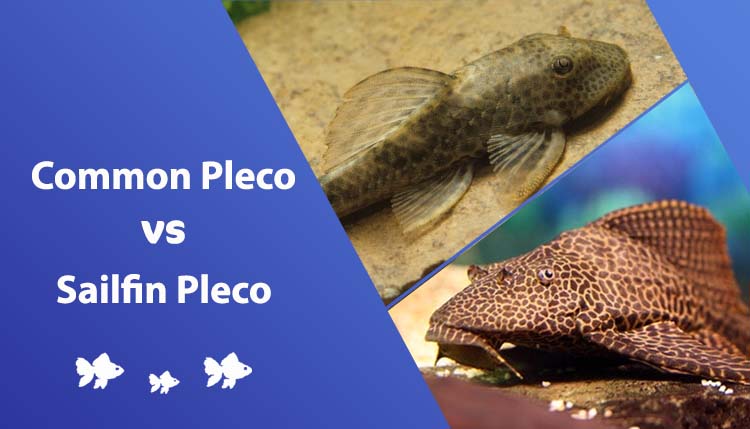
If you like catfish, you might have looked into getting some kind of pleco fish. In fact, there are over 150 varieties of the pleco, with the common pleco and the sailfin pleco being two of the most popular ones for home aquariums.
We are here today to do this common pleco vs sailfin pleco comparison to see which one might be the better fit for you.
Visual Differences
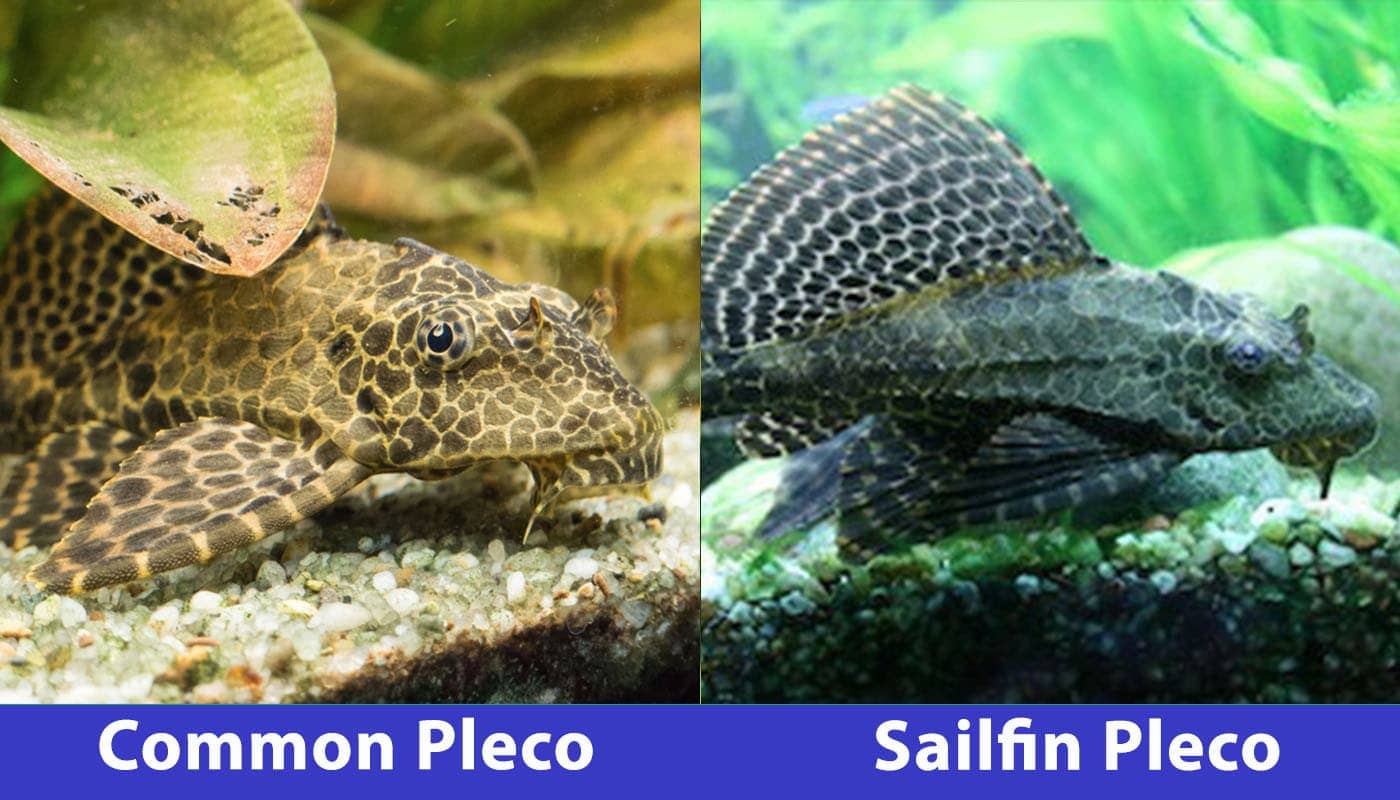
At a Glance
- Average length (adult): Up to 24 inches
- Lifespan: 10–15 years
- Habitat requirements: 90–100 gallon tank
- Colors: Most commonly brown, variety of patterns
- Average length (adult): Up to 18 inches
- Lifespan: 20–25 years
- Habitat requirements: 120-gallon tank minimum
- Colors: Brown, sandy with spots
Common Pleco
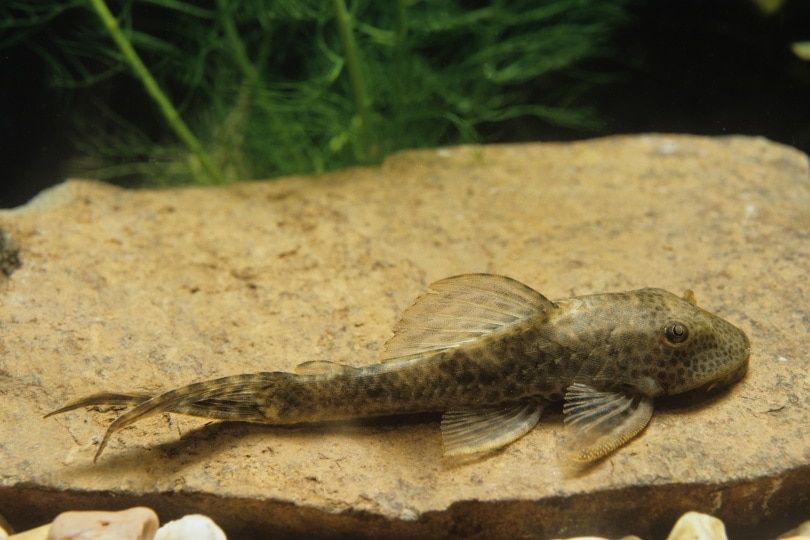
Origins
The common pleco is in fact one of the most popular types of catfish to have in a home aquarium, and there are actually over 150 species of the pleco. The full name for this fish is Plecostomus, but pleco is much easier to say, so we will stick with that. This catfish can be found all over the place in the rivers and streams of South America.
Size & Appearance
In terms of the appearance of the common pleco, they tend to be brown in color, but it does depend on their surrounding environment, with the majority of them having some kind of sandy or spotted pattern all over their bodies. Keep in mind that the common pleco is known as the armored catfish because instead of normal scales, it has very thick and hard plates all over its body, which is for protection from predators of course.
These fish have very well-developed fins which they can use to quickly accelerate and maneuver in the water, plus the fins tend to be quite coarse and spiny, also for protection. In terms of size, the common pleco can grow to 2 feet or 24 inches in length, so it is quite the large catfish to have in a home aquarium.
Lifespan
The common pleco has a lifespan between 10 and 15 years. If you provide them with more than ideal tank conditions, they may live for even longer than this.
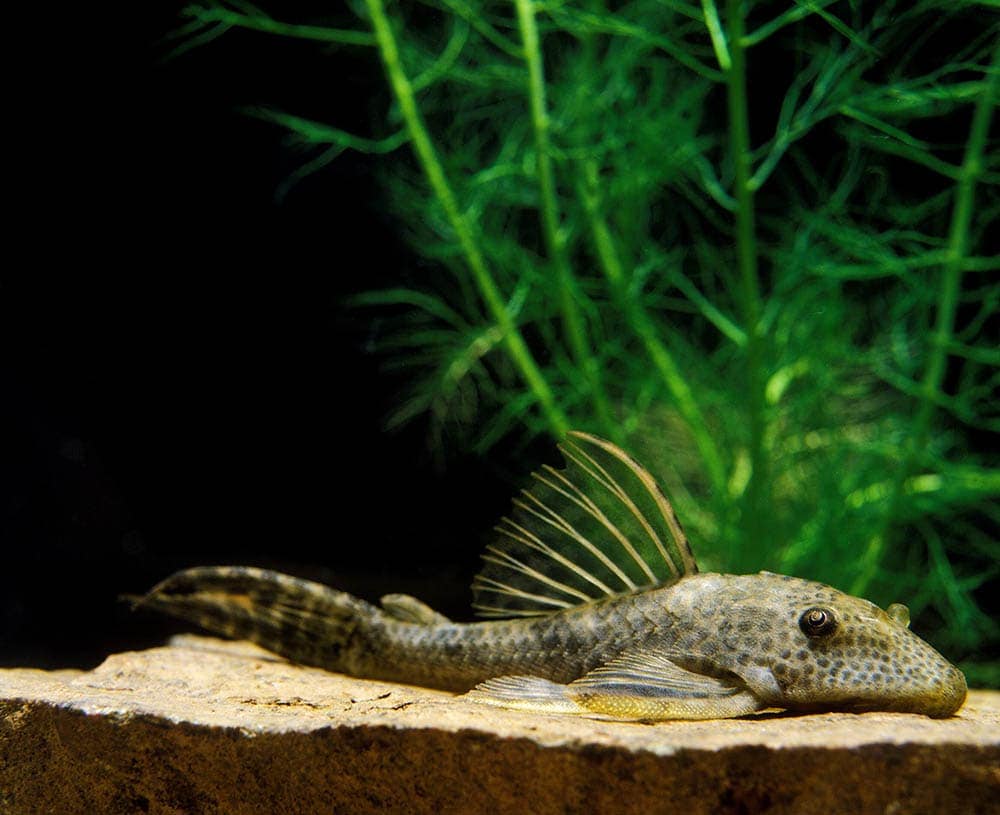
Tank Size & Habitat
As we mentioned above, the pleco grows to around 2 feet in length, which means that it requires an aquarium of a substantial size. The tank you get for your common pleco should be at least 80 gallons, which is the absolute minimum. To ensure a maximal level of comfort, the tank size should be between 90 and 100 gallons per fish. The issue here is that you really cannot keep them together due to size constraints.
Yes, a 100-gallon tank is enough for a single common pleco, but they like to have a lot of room and can be a bit territorial, so if you plan on keeping two common plecos in the same. tank, you will need an aquarium of 250 to 300 gallons, which for most home applications is simply not feasible.
One thing to remember for a common pleco tank is that they like moving water, not too fast, but with a fairly strong current nonetheless. Moreover, in the wild common plecos are used to living in heavily vegetated waters with tons of debris, such as rocks and driftwood. One of the most important things you need to add to a common pleco tank is lots of hollow driftwood which they can hide and sleep in, especially during the day.
They don’t require all that much light, as they often live in murky waters, but a half-decent aquarium light is still recommended.
Water Conditions
One of the convenient aspects of the common pleco is the fact that it is a hardy and resilient fish that can survive in a variety of water conditions. Yes, you need a nice filtration unit that engages in all 3 major forms of filtration, and it needs to be a decent one, as the fish come with a heavy bio load and can be a bit messy.
In terms of water temperature, anywhere between 72 and 84 degrees Fahrenheit will do just fine, with a pH level between 6.5 and 7.5. By far the most important thing to keep in mind when it comes to water conditions for your common pleco is that the water does need to be kept quite clean.
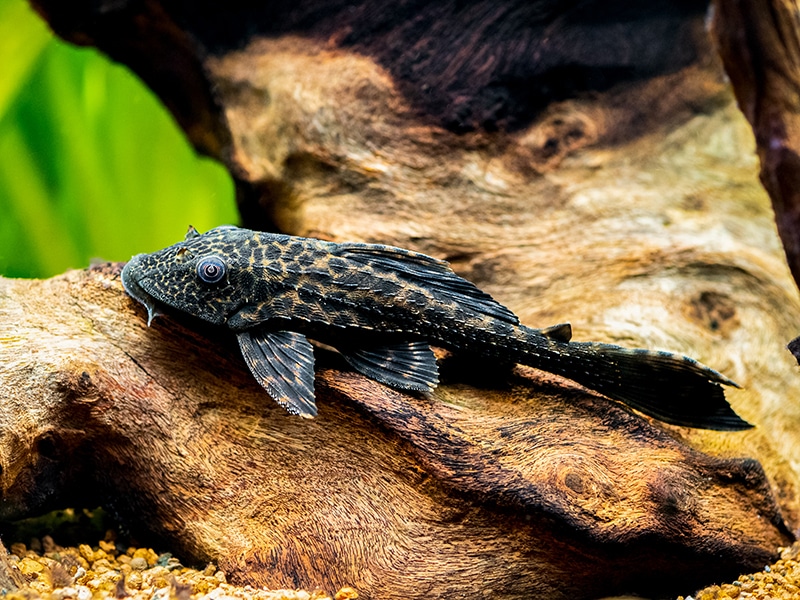
Feeding
Something to be aware of is that there is a common misconception that common plecos only eat algae. Therefore, people will only feed their plecos algae, and this results in malnourished and unhealthy fish. The common pleco should be fed a mix of algae and vegetables, with some occasional meaty and live foods thrown into the mix.
Yes, the main part of their diet is going to be algae, but some boiled and skinned peas, zucchini, lettuce, and spinach should be included, as well as some live earthworms, bloodworms, insect larvae, and small crustaceans. Also, be sure to remember that common plecos need a whole lot of fiber.
Compatibility
In terms of compatibility, the common pleco is usually fairly peaceful and non-aggressive with most other fish, although its own kind can be a bit of an issue at times. Generally speaking, as long as any other fish you have in the tank cannot fit into the mouth of the common pleco, it should be just fine.
Sailfin Pleco
Origins
Yes, the sailfin pleco is a type of Plecostomus fish, one that is a little different from the common pleco, although not by much. It does differ in terms of size and appearance, and it requires slightly different water conditions, but that said, both are fairly similar.
The sailfin pleco can be found in the rivers and tributaries of South America. It’s a fairly widespread fish that has become quite popular in the fish-keeping community.
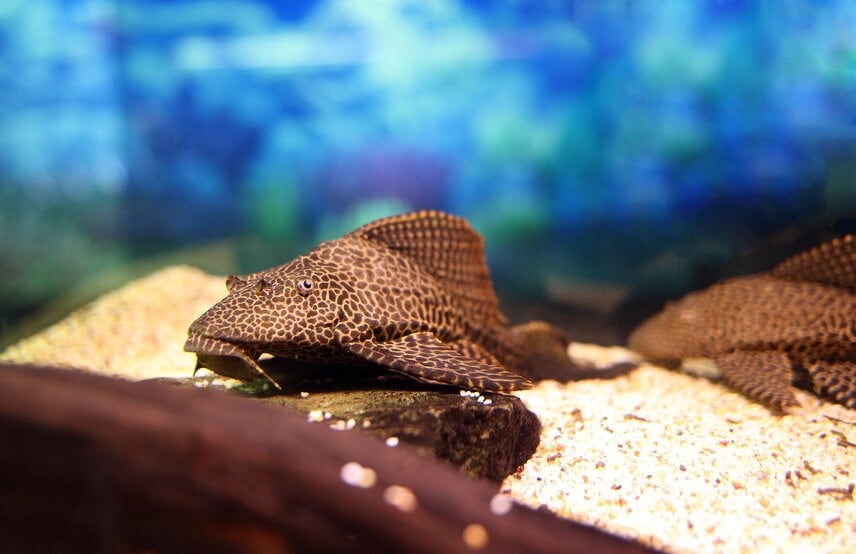
Size & Appearance
The sailfin pleco is a bit smaller than the common pleco, as it grows to a maximum of 1.5 feet or 18 inches long, so it’s about half a foot shorter than the common pleco. Moreover, another big difference is that the sailfin pleco has a massive dorsal fin that looks like the sail on a sailboat. In terms of coloration, they are fairly similar to the common pleco, often being brown and having sandy or spotted patterns on them.
Other than the size difference and the difference in the dorsal fin, both the common pleco and sailfin pleco are relatively similar.
Lifespan
In terms of the lifespan of the sailfin pleco, you should be prepared to have it live for longer than the common pleco. The sailfin pleco can easily live for 20 years, or even up to 25 years given the right housing conditions.
Tank Size & Habitat
What is interesting to note about the sailfin pleco is that even though it is smaller than the common pleco, it actually requires a slightly larger tank to keep it happy and healthy. It’s not that they are overly territorial or aggressive, but they are known to be somewhat active swimmers and they do enjoy having a lot of space.
Whereas a common pleco will do fine in a tank of 100 gallons, a sailfin pleco needs to have a minimum tank size of at least 125 gallons. Once again, this makes keeping more than a single sailfin pleco together quite difficult, as two of them require an aquarium of 300 or 350 gallons to be happy.
In terms of the habitat, sailfin plecos will enjoy a smooth gravel substrate or sand. They have been known to bury themselves in muddy waters. Just like the common pleco, the sailfin pleco requires lots of live plants that it can nibble on and hide under, both from the light and from predators.
The fish also really enjoy having rock caves and driftwood where they can take refuge. In terms of water movement, they do like a little bit of water movement, but not quite as much as the common pleco.
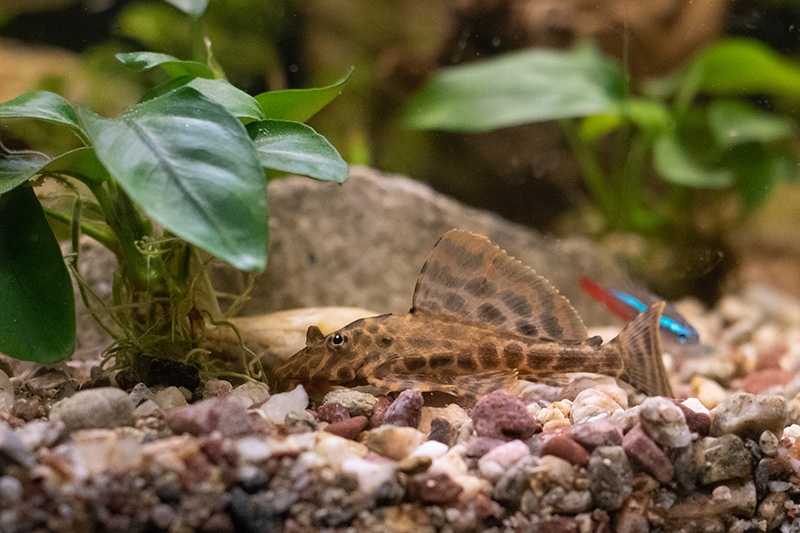
Water Conditions
The sailfin pleco is quite easy to care for in general, but one thing to know is that it does have some stricter requirements in terms of water conditions than the common pleco. The sailfin pleco requires the water temperature to be between 74 and 79 degrees Fahrenheit, so you will need temperature control tools.
In terms of the pH level, the sailfin pleco requires the water to have a pH level between 6.5 and 7.4, with a water hardness level between 6 and 10 dGH. It’s a bit harder to house the sailfin pleco because of this, but it’s still not a deal breaker.
Feeding
Sailfin plecos will eat just about anything, which is quite convenient. The fish will scavenge algae, dead plants, dead fish, and more or less everything in between. You can feed the sailfin pleco algae, a variety of veggies, and a variety of live foods too. They are not picky eaters in the least.
Compatibility
Sailfin plecos tend to be quite peaceful and non-aggressive, which makes them good community fish. However, with that being said, you might not want to keep them with other catfish, as they will often tussle with each other. Other than that, as long as any other fish are not small enough to fit into the mouth of the sailfin pleco, it should be fine.
We have covered a separate article on the main differences between male and female plecos, you can check it out here.
Conclusion
As you can see, while generally speaking, these fish are peaceful, hardy, and easy to feed, the big part to remember here is that they are, well, big. Both the sailfin pleco and the common pleco require a whole lot of space and the proper tank setup to be happy.
Other than their large size, they are quite easy to care for, with the common pleco probably being the easier of the two.
Featured Image Credit: (L) slowmotiongli, Shutterstock, (R) topimages, Shutterstock





